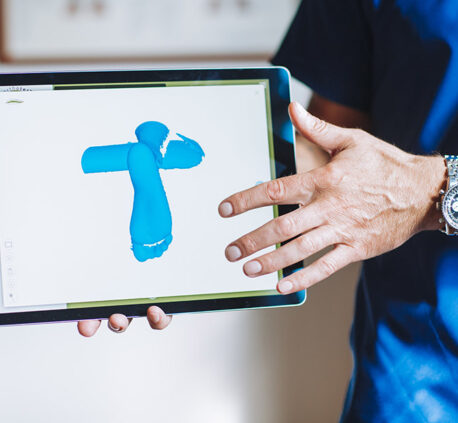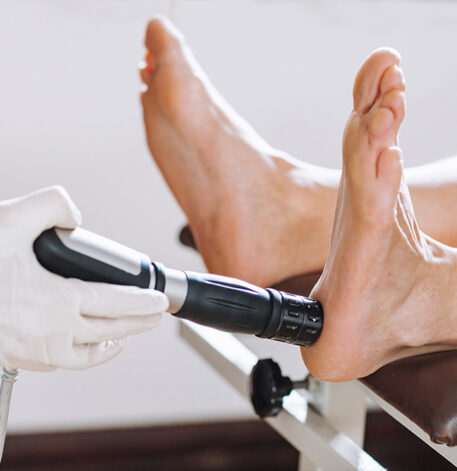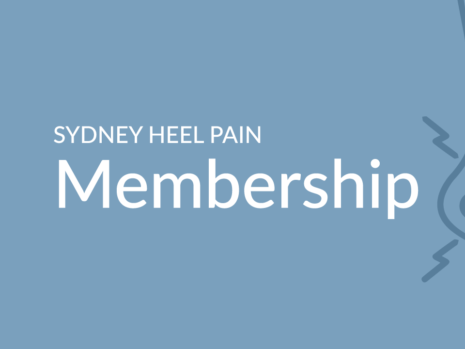Plantar Fasciitis Treatment –
Crows Nest Clinic
Chronic plantar fasciitis is a mechanical overload condition that does not resolve through passive interventions such as stretching, footwear changes, or rest alone. Persistent symptoms are typically the result of unaddressed load faults within the foot-ankle complex.
At Sydney Heel Pain Clinic – Crows Nest, Dr Karl conducts biomechanical analysis to identify the structural, movement-based, or postural contributors preventing plantar fascia recovery. Patients attending our Crows Nest clinic have frequently undergone conventional podiatry, physiotherapy, orthotic provision, or cortisone injections elsewhere without lasting improvement.
Each case is evaluated through a structured clinical framework:
- Where is the mechanical overload occurring?
- What is the specific postural, structural, or movement fault driving tissue stress?
- What intervention is required to allow recovery without recurrence?

This is not generalised protocol-based care. Each diagnosis is based on:
- Digital gait analysis (real-time loading patterns and force transfer)
- 3D foot scanning (structural integrity and arch evaluation)
- Functional load testing (plantar fascia, Achilles, calf chain)
- Movement history review (compensatory behaviours, footwear assessment)
Patients presenting for plantar fasciitis treatment in Crows Nest typically require mechanical correction — not just symptom suppression alone. Until the mechanical irritant is removed, plantar fascia pathology persists.
Book Online for Diagnosis-Led Plantar Fasciitis Treatment – Crows Nest

Treatment Methods and Clinical Services
Shockwave therapy is an evidence-supported intervention used for chronic plantar fasciitis, Achilles tendinopathy, and persistent soft tissue overload syndromes. The therapy delivers targeted acoustic waves to stimulate angiogenesis, promote fibroblast activity, and disrupt chronic nociceptive patterns. No surgical downtime. No corticosteroid injections. Pain relief can be instant and recovery time is usually reduced significantly.
Footwear recommendations are made following digital gait assessment and structural analysis — not based on brand marketing, comfort perception, or aesthetic preference. Shoe selection is tailored to optimise load transfer across the foot and reduce peak plantar pressures that contribute to ongoing fascial strain.
Custom orthotics are prescribed when mechanical analysis reveals focal overload that cannot be corrected through footwear alone. Orthotics are fabricated using 3D digital scans to provide precision load correction, rather than simply elevating the arch or relying on static templates. Devices are manufactured specifically to alter dynamic loading through the midfoot and rearfoot based on each patient’s pathology.
Restoring mechanical function requires more than passive stretching. Interventions include:
- Eccentric calf strengthening
- Targeted plantar fascial mobilisation
- Controlled progressive load exposure
Treatment plans are structured according to tissue irritability, chronicity, and compensatory factors identified during assessment.
Clinical Background
Dr Karl is a podiatrist with over two decades of experience focused on the mechanical assessment and treatment of heel and lower limb pathology. After graduating with honours from the University of Salford (Manchester) in 1998, Dr Karl has specialised in the diagnosis and management of chronic plantar fasciitis and load-induced foot dysfunction.
He has contributed to podiatric education through guest lecturing at the University of Western Sydney and has provided specialist clinical care as the consulting podiatrist to the Sydney Opera House since 2020.
Patients travel from across the Lower North Shore, Greater Sydney, and interstate to consult with Dr Karl — particularly in cases where previous interventions have failed to produce recovery.
What is Plantar Fasciitis?
Plantar fasciitis refers to inflammation and structural degeneration of the plantar fascia — the major load-bearing tissue on the underside of the foot connecting the heel bone to the toes. Repetitive mechanical overload causes microtrauma at the fascial insertion, leading to pain, tissue thickening, and, in advanced cases, tearing.
Heel spurs visible on x-ray are incidental and are not the direct cause of pain. Treatment must target the pathological tissue, not the bony morphology.
What Does Plantar Fasciitis Feel Like?
Patients with plantar fasciitis typically report:
- Sharp or stabbing pain under the heel
- First-step pain upon waking
- Pain after prolonged sitting, driving, or resting
- Bruised or throbbing sensation under the arch after extended walking
In early cases, symptoms may fluctuate. In chronic cases, pain becomes more consistent and disabling.
The Importance of Accurate Diagnosis
Differential diagnosis is critical and must exclude:
- Partial plantar fascia rupture
- Calcaneal stress fracture
- Baxter’s nerve entrapment
- Insertional Achilles tendinopathy
- Tarsal tunnel syndrome
Diagnosis is confirmed through clinical examination, load testing, and imaging when appropriate.
Stages of Plantar Fasciitis
- Mild discomfort in the heel or arch post-load
- Early morning stiffness, typically resolving after mobilisation
- Symptoms may be ignored or misattributed
- Consistent morning hobbling or limping
- Heel pain after cumulative daily activity
- Fluctuating but progressively worsening symptoms
- Constant pain affecting standing, walking, and sleeping
- Fascial thickening visible on imaging
- Gait compensation and secondary musculoskeletal symptoms

Who Develops Plantar Fasciitis?
Adults
Most patients are between the ages of 40–60. Risk factors include:
- Sedentary individuals suddenly increasing activity
- Long periods of standing or weightbearing at work
- Poor footwear with inadequate support
- High body mass index
Children and Adolescents
Juvenile cases are less common but must be distinguished from:
- Severs disease (calcaneal apophysitis)
- Achilles overuse injuries
Accurate diagnosis in younger patients is critical for appropriate management.

Contributing Factors
Factors that contribute to plantar fascia overload include:
- Poor ankle dorsiflexion
- Tight posterior chain musculature
- Flat foot posture with prolonged pronation
- High-arched rigid foot types with poor shock absorption
- Inappropriate footwear selection
- Sudden escalation of running or walking volume
Plantar Fasciitis Treatment – Crows Nest Patients
For patients seeking plantar fasciitis treatment in Crows Nest, the objective is to restore mechanical integrity, offload pathological structures, and progressively recondition the foot to tolerate load.
Treatment strategies may include:
- Radial or focused shockwave therapy
- 3D-printed custom orthotics
- Tailored footwear modification
- Load progression protocols
- Soft tissue mobilisation and strengthening
Orthotic devices prescribed at Sydney Heel Pain Clinic are designed to redistribute loading forces away from the inflamed tissue without applying upward pressure on the plantar fascia — avoiding traditional high-arch designs that can exacerbate pathology.
Surgical referral is rare and considered only after exhaustive mechanical correction has failed.


